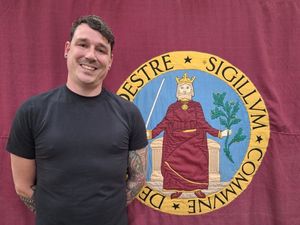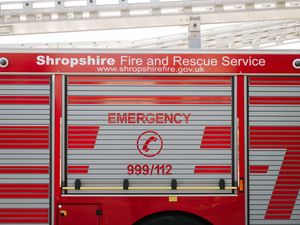Shropshire shines with dozens of buried treasure finds during lockdown
It has been home to some of the most spectacular historic finds of recent years, and new figures show the extent of treasure hunters' Shropshire success.
A total of 153 finds have been made in the county since 2012 – with 31 in 2020 alone.
Across England, Wales and Northern Ireland, the number of treasure finds topped 1,000 for the seventh year in a row in 2020, with 1,077 recorded.
The British Museum said restrictions on people's exercise during coronavirus lockdowns contributed to a boost in unexpected garden discoveries.
More than 6,000 finds – which could include a single object or a hoard of coins – were recorded with the museum's Portable Antiquities Scheme during the first lockdown alone, when hunting with a metal detector outside the home was banned.
Former culture minister Caroline Dinenage said it was "brilliant" to see the scheme grow from strength to strength during lockdown thanks to garden finds and digital reporting.
Shropshire has turned up some truly spectacular finds in recent years, including the stunning Bulla sun pendant discovered by Bob Greenaway from Oswestry.
The retired engineer found the intricate piece while metal detecting in the Marches, unearthing one of the most significant pieces of metalwork ever discovered in Britain – around 3,000 years old.
The piece has been on display at Shrewsbury museum, before going on permanent display at the British Museum, such was the significance of the find.
The county also saw the 'Wem Hoard' unearthed in 2019.
The hoard – described as "a hugely important discovery from the Dark Ages" – was located by Steve Lord, Steve King and Andy Bijsterbosch after they detected a handful of coins in the ploughed field during a rally organised by John Parry and the Whitchurch Lions.
The hoard was, according to experts, one of only six finds in the country of hacked up silver and coins – the system of payment by bullion after the Roman left in the fifth century.
It was found when the three metal detectorists made their way to the furthest corner of a farmers' field at the Wem detecting rally.
So important was the find that archaeologists returned to the area and unearthed further silver remnants.
Anyone who thinks they have struck a hidden hoard has to tell the coroner within two weeks, so they can hold an inquest to decide whether it constitutes treasure and who will receive the items.
If they don't, they face an unlimited fine or up to three months behind bars.
Local and national museums are given the chance to purchase any pieces a coroner rules as treasure, but the finder doesn't leave empty-handed – they will be paid a sum depending on the haul's value.
In 2020, 96 treasure finds were reported across the West Midlands.
The Treasure Act currently defines treasure as finds older than 300 years and made of gold or silver, or artefacts made of precious metals.
But the Government announced in December 2020 that a new definition would be introduced to protect treasure from being lost to the public. It would see artefacts also defined as treasure if they are "of historical or cultural significance".
Metal detecting is the best way to unearth lost treasure, according to the figures.
The devices tracked down 96 per cent of finds in 2019, the most recent year with details on how the objects were discovered.
A further three per cent – 36 cases – were archaeological finds and 10 from field walking or scouring streams and shores.
Police recovered one treasure trove from a "nighthawker" – an illegal treasure hunter.





